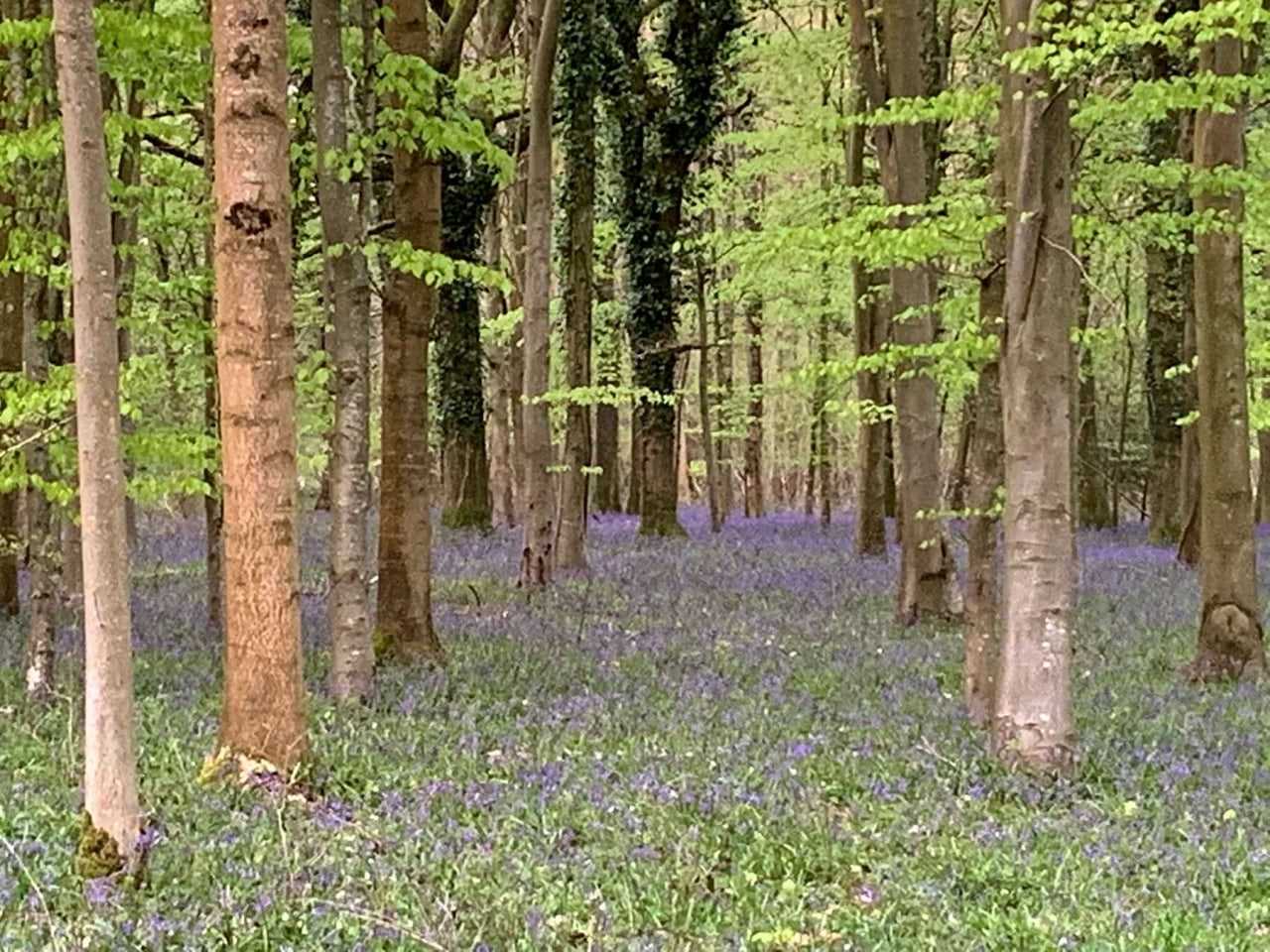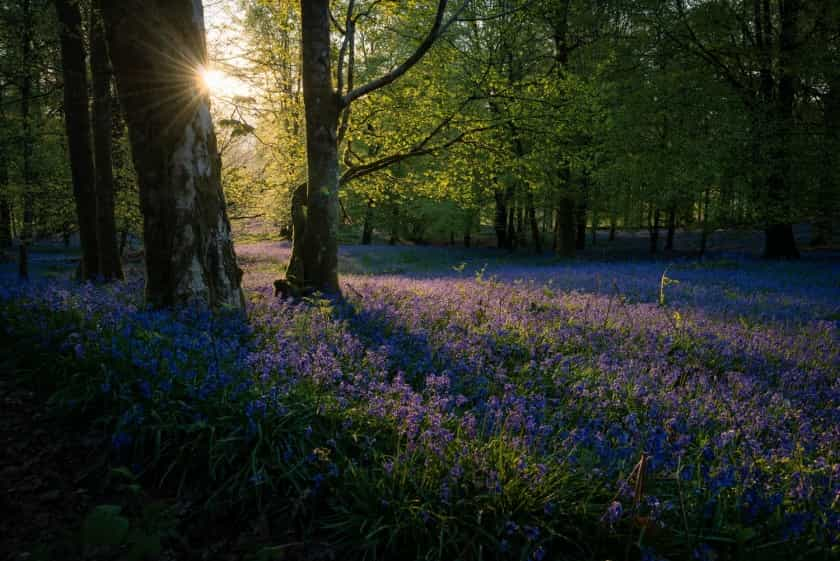Where to Spot Bluebells in the Middle of Wiltshire

For just a few weeks each year, the woodlands of Wiltshire burst into a bright carpet of bluebells.
These tiny flowers have long been associated with ancient myths, fairy-lore and magic. Their watercolour splashes of purple, blue and white, appearing from late April into May, signal the arrival of spring.
Wiltshire has some stunning displays of bluebells in its ancient wooded vales. So don your boots, pack a picnic and take a walk in the bluebell woods. And if you hear any ringing, pause to watch the fairies gather…
Here’s where to spot bluebells in the middle of Wiltshire.
Clanger Wood - Heywood (between Trowbridge and Westbury)
April showers and seasonal sunny spells transform this pocket of deciduous and evergreen trees into a patchwork of spring flowers. The Woodland Trust, which manages Clanger Wood, lists the 145-acre site as one of the finest places to see native bluebells in Wiltshire.
Bluebells native to the UK are the dark cobalt variety with a sweet scent. Clanger Wood is a peaceful spot with the occasional dog walker meandering along flat paths that are accessible for the less agile.
Find quiet campsites near Trowbridge and Westbury in west Wiltshire.
Hagbourne Copse - near Swindon
In April and May, Hagbourne Copse comes alive with a technicolour display of early-season blossoms. The cascade of native bluebells is also sprinkled with anemones, primroses and Goldilocks buttercups.
Few people know of this quiet area, save the odd office worker taking a lunchtime stroll, as it’s a hidden gem a little way from one of Swindon’s enterprise parks. There's free parking along the road leading to the nature reserve’s gated entrance, though it can be easier to find a space outside of business hours.
Check availability for glamping holidays in Swindon.

West Woods - near Marlborough
West Woods, 2.5 miles southwest of Marlborough, is a blend of beech trees and native wildlife on the site of an ancient woodland. The 100-acre Forestry Commission site is one of the most popular places in Wiltshire for bluebells. Just recently, archaeologists have speculated that the sarsens (sandstone blocks) found in West Woods were the source for the giant boulders that make up Stonehenge. It would have been quite the feat to drag the massive stones to Salisbury Plain. West Woods lies 15 miles north of the eerie rock monoliths and is also close to the stone circle of Avebury. The two are designated World Heritage Sites in Wiltshire.
There are lots of signposted trails in the area, which was originally part of the Royal Hunting Forest of Savernake. An easy-access route passes the spring bluebell displays for those on foot, taking a bike ride or pushing a buggy. West Woods can get a bit busy on weekends, but there’s ample parking and plenty of quiet places to find a little peace among the blooms.
Search the best touring sites near Marlborough.
Grovely Wood - near Salisbury
Grovely Wood is one of the biggest expanses of woodland in southern Wiltshire. It also has one of the best bluebell glades near Salisbury. Part of the Wilton Estate, the area has a rich history. Ancient thoroughfares run through the landscape, including a Roman road. You might stumble across WWII bunkers used by the American Air Force and dilapidated cottages that once made up a long-abandoned settlement.
Today, Grovely Wood is a peaceful labyrinth of paths among the mature oak and large patches of hazel coppice. The woods come to life in springtime with huge tracts of bluebells, often best seen as the sun starts to set behind the ancient trees.
But beware… Grovely Wood is said to be visited by the Burcombe Woodsman, whose arrival is signaled by the crack of a twig, and the Handsel sisters who were tried for witchcraft here in the 18th century. Fear not though – the bluebell fairies will keep you safe.

Find the best sites and holiday parks to make a base from which to explore Salisbury and Stonehenge.
Stourhead - Maiden Bradley
You might recognise Stourhead, a National Trust estate with grottos, towers, temples and landscaped gardens, from screen adaptations of Pride and Prejudice. The 18th-century manor featured in the 2005 movie version of the Jane Austen classic. When the brooding Mr. Darcy makes a clumsy first proposal to Miss Elizabeth Bennet, he does it at the Temple of Apollo which stands high above the grounds.
People have long occupied Stourhead. The Park Hill Camp Iron Age hill fort lies to the north west of the estate. It is just one of many prehistoric monuments in Wiltshire.
Stourhead has a stately elegance at any time of the year but really comes into its own when the bluebells spring through. Pick up a map at the visitor centre and follow either the short Bonham Wood circular walk or the Park Hill Camp walk for the two best places to see the bluebell show.
Find campsites near Warminster, the market town on the Wiltshire Downs close to Stourhead and Longleat Safari Park.
There’s so much more to do in Wiltshire
Wiltshire is brimming with attractions for all the family. Check out eight of the best things to do in Wiltshire while you’re holidaying in this historic county in the South West of England.